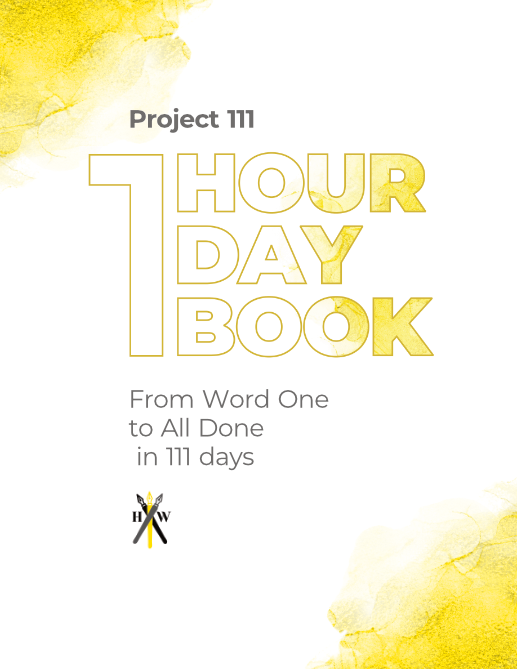Frame narratives are a type of story that have existed on this planet for millennia. Frame stories have been popular in both highly literary fields and more popular genres.
A frame narrative is a type of tale that creates a story within a story. Given the name “frame narrative” it’s easy to think of this literary technique in terms of an actual painting with a frame. For the sake of the metaphor, pretend that the actual frame of the painting is a piece of art in itself, like these Renaissance art frames.
The frame surrounds the art of the painting. In a similar sense, frame stories have an encapsulating story that surrounds whatever narrative may exist within it. My favorite example of a frame story (that I’ve shared a few times in my articles) is The Name of the Wind by Patrick Rothfuss.
The picture frame in this story follows an innkeeper named Kote. This part of the story is told in third person point of view and we follow a sad, red-haired man as he goes about tending his store. This is the narrative frame. The reader understands this moment as the book’s present tense.
This framing story comes in and out during the course of the novel, but the frame sets forth the main narrative when Kote is visited by the Chronicler who finds out Kote might be Kvothe, a man of legend. The Chronicler asks to record Kvothe’s story, and Kote agrees.
The main narrative, or the painting within the frame, is the story that the innkeeper tells. Kvothe’s story is the reason we read the novel. Kvothe becomes the narrator and the reader experiences this main narrative in the first person point of view. Not only does the shift in POV make for a different story, but the painting (story) in the frame contrasts many elements of that frame and provides an added incentive to figure out the narrative.
In this article, we’ll take a deeper dive into what a frame narrative can do and how you can include one in your novel if you’re as convinced as I am that it’s the best narrative structure.
Table of Contents
The Benefits of a Frame narrative

Frame narratives have been around for a long time. They’ve been used anciently, such as with The Odyssey, given that the main character tells the story from an entirely different place and time than the events of the main story. In the middle ages, Geoffrey Chaucer used one in The Canterbury Tales. Joseph Conrad used one centuries later in Heart of Darkness, which uses flashbacks as the painting and a dedicated time and place as the frame.
The thousands of years of frame narratives have also given rise to plenty of scholarship on the literary term, but why do storytellers still use this method?
The answer is that this narrative structure has immense upsides to using it.
One of the best reasons to write a frame story is that it unlocks non-linear storytelling: that is, any kind of story where time doesn’t flow in a single direction. While it may not be as obviously non-linear as plenty of Christopher Nolan movies, the frame narrative can play with time and place in a way that a single story would have difficulty accomplishing.
With non-linear storytelling you run the risk of confusing your audience, but the frame narrative sets itself up to be one of the most easily comprehendible because the audience knows immediately that they will be hearing, reading, or seeing multiple stories.
By opening up your storytelling possibilities, you can also more freely play around with things like dramatic irony, unreliable narration, and story arcs. If we go back to The Name of the Wind, the audience sees that the Kvothe telling the story hardly resembles the Kvothe of the legend. The dissonance between the two characters invests the reader in both sides of the story because it becomes a puzzle of sorts.
The reader will want to know in the painting story what happened to make the frame story narrator the way that he is. On the other hand, if the frame story is to be believed, the reader will want to know if he is simply lying or if he had some sort of tragic downfall that brought him to the place that he is.
While not every frame narrative has to play with the notion of an unreliable narrator, The Name of the Wind masterfully balances this aspect which is shown by invested interest in both sides of the story.
Frame stories also have the potential to make outlining the story a lot easier.
You can start with a character and have them be your narrator. Typically these stories have the narrator be someone in the future and the story they tell will lead to your understanding of why they are the way they are.
That’s not always the case though. For example, the frame stories Arabian Nights involve someone who is telling stories so as not to be killed. But, if you plan to have some great character reveals and interesting development, a frame narrative can help with that.
By choosing a narrator with a certain flaw, the painting narrative can help you address how that flaw might have come to be, and have the final return to the narrator show a moment where they know how to overcome it.
The possibilities are endless when it comes to character creation and frame storytelling.
The Downsides to Frame Narratives

One of the main drawbacks for writing frame stories is the possibility that you give your readers a sort of narrative whiplash. Taking them in and out of various stories can exhaust your readers and make them want to put down the book.
Having your readers put down your book isn’t always bad, of course. They could just need time to process what you’ve put out there, but you run the risk of them putting down your story and then finding one they would rather read.
A smaller concern, but one that you have more control over, is that one of your stories will just bore your reader.
Some people have complaints about The Name of the Wind because they don’t like returning to the inn in intermission sections. They find that one of the stories, the painting story, is far more interesting than the frame narrative.
By having one interesting story and another “boring” one, you may have your readers dread the moments when they’re taken out of the section of the novel that intrigues them most. The obvious fix here is to have both (or all, depending on how many narratives you’re balancing) be interesting.
“But,” you scream loudly in my ear, “both of the stories are interesting! One of them is just a slow burn with a massive payoff at the end.”
To that I say, “Excellent! You’ve just written one of my favorite story structures. And I implore you to stick with it.”
The problem with having a slow burn story next to a fast burn is that the reader will almost always be more interested in the fast burn story. As you mentioned while you were just shouting in my face, one of the most important things to do if you are trying this kind of story is to have a big payoff. If the slow burn isn’t worth it, you’ll likely disappoint your readers.
The aforementioned easy fix is to have no slow burns at all. The frame narrative of Hyperion is somewhat a slow burn, especially at first, but the promise of the payoff is immediate. You read the frame story knowing exactly where it’s heading and that enough quickens the pace of it.
In the meantime, this novel presents you with many different stories told from multiple perspectives. I found myself wishing I could stay in each previous story during the transitions but quickly looking forward to what I was reading then. At this point, the narrative whiplash could come into play for some readers, but I found that my eyes were glued to the page.

Our 84-page book planner and 111 day writing course.
Further Things to Consider

While many authors have chosen to write with this narrative structure, no one has perfected it or fully explored it. Framing your novel can help you in so many ways, and you can help push the structure further with your creativity. That is all to say that I don’t think this type of novel has been overworked, and there’s still so much room for you to experiment with it.
There’s also enough literature out there for you to get a grasp of the structure and make a simple novel of it. Just because there’s room to explore doesn’t mean you can’t go for the basics.
One of the easiest ways to make a frame narrative is to work backwards. If you have a story idea already finished, you can think of how the ending events of the story would affect your main character after a decade or two or until their deathbed. You can start your story there, with your wizened narrator (who still has more growing to do), and then tell the story from the perspective they have now.
You can write a frame narrative a billion other ways, but that’s probably the easiest way to get started with one. You can have the narrator’s act of storytelling help them learn something about themself or give them some kind of lesson that will propel them forward in their present time.
You can also do your own take on a Canterbury Tales-type story which would give you a lot of room to tell many different stories. You’ll have a frame of the group going somewhere and collectively deciding to have each person in the group tell the story of why they’re going there.
There’s a lot of room with the frame, but the main idea is to get a group and have all the characters tell their stories. As displayed by Hyperion‘s use of this form, you can take it into any genre and tell a breadth of stories that can impact your readers.
Conclusion

Hopefully you’ve learned a thing or two about frame narratives, and you feel a little more able to go about writing one.
If you got through this article and realized you’ve never read frame stories then take this moment to commit to yourself that you’ll read one right away. My personal favorites are The Name of the Wind and Hyperion, but you could look into books like Frankenstein, The Arabian Nights, or The Prestige (which Christopher Nolan turned into a movie).
Frame narratives have many upsides that will intrigue readers. You can have multiple stories each with their own threads and developments in a single novel. You can have character moments that impress your audience because the stories will click and align or divert and confuse. Something about the way these tales are set up forms a sort of inherent mystery. Doesn’t that sound exciting to write? Or at least to read?!
But for their many benefits, these stories can run into some serious negative effects. Balancing and weaving all the threads of a single story can be hard enough, but when you try to maintain reader interest across multiple perspectives and stories, you might lose your grasp on the audience. They may become confused, bored, or apathetic.
The important thing to do is figure out how you’ll manage different story speeds. If one of your stories is a slow burn, spend as little time as possible in that story. Let the quicker-paced story do most of the talking while you hit the necessary beats of the other one and back away.
If you do decide to have a slower tale, make sure that the payoff for it is worth it. Doing this will be somewhat easier because you’ll know what your character needs to work on, and you can have tons of tie ins from whatever story they’re telling.
Finally, just remember that you are a storyteller! You can use this frame and narrative structure in whatever way intrigues you. At a certain point, you should just write whatever story you want and not worry about how it will entertain others. The frame narrative structure can be a great way to let your creativity run wild, and that’s why we write isn’t it?
For more helpful writing articles, check out our blog!
gavinwride
Gavin is a fantasy author, short story enthusiast, and nature lover. When he’s not reading, writing, or exploring the outdoors, he is likely playing games. His board game collection is probably too big for someone living in a small apartment, and he has enough yet-to-be-played video games to fill a lifetime. His favorite book is "The Name of the Wind". His favorite author is Edward Abbey. His favorite game is "Dark Souls III", and he’d be more than happy to spend the day talking about lore, bosses, and game mechanics.
Our 84-page book planner and 111 day writing course.
